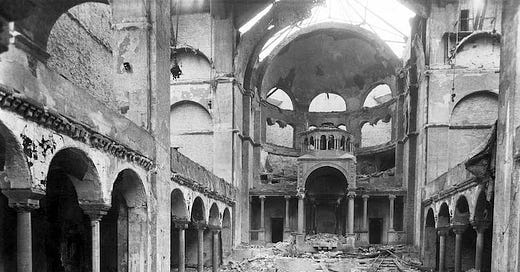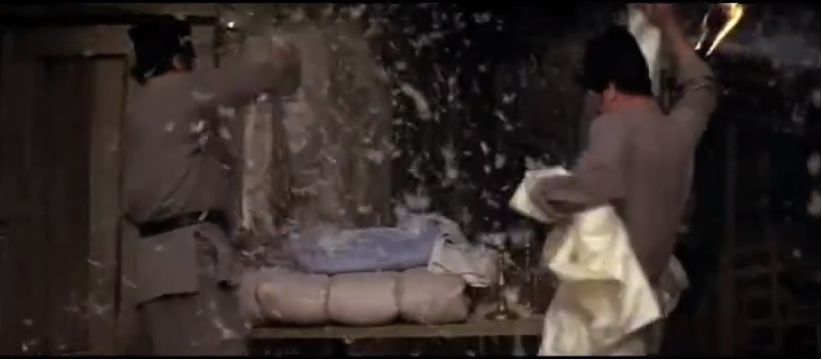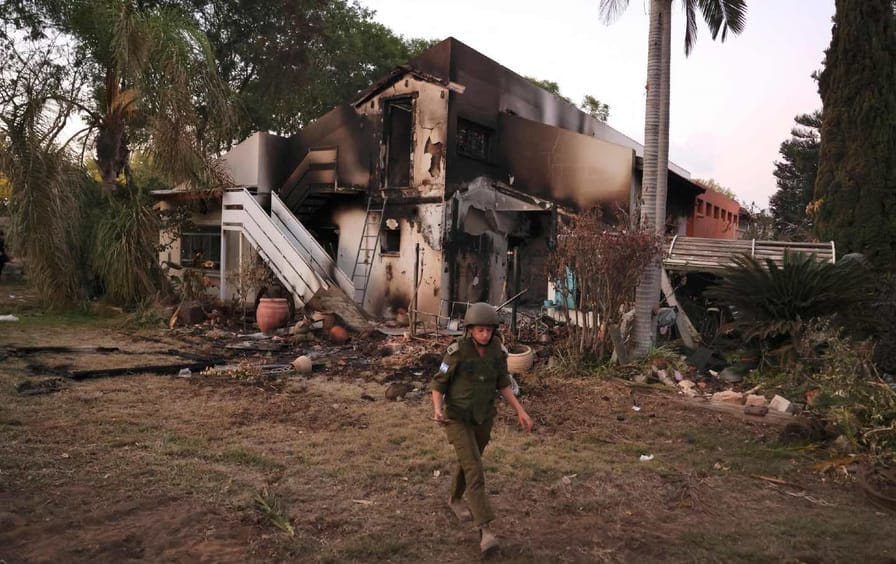The word pogrom is from the Russian, “to destroy, to wreak havoc, to demolish violently”, and it is forever tied to antisemitism. It is a violent attack or assault on Jews.
The word ‘pogrom’ elicits a visceral reaction, and paints a black and white picture of Jews under attack in their shtetls. Picture the scene in Fiddler on the Roof, with goose feathers erupting from torn linens, to broken glass, to crying children, to livelihoods and lives ended.
In 1903, the Kishinev Pogrom took place in what is today Moldova. In what became the classic example of a pogrom, 49 Jews were murdered on Easter, with 600 women raped, children beaten, and 1,500 homes damaged. They were targeted for being Jews.
The Kishinev Pogrom turned the eyes of the world on the plight of Russian Jews. It energized the Zionist movement, and even led Theodor Herzl to propose the ill-fated Uganda Plan that year, hoping that Jews had somewhere, anywhere, to go, even if not Palestine.
Herzl and others believed in 1903 that Jewish life in Europe had an expiry date, and they were right. The impact of the Kishinev Pogrom on the Jewish world, and on Zionism, was dramatic. But that was obviously not the last pogrom.
Kristallnacht
Today, on November 9, we mark the 85th anniversary of another pogrom: Kristallnacht
On the “Night of Broken Glass” the Nazis organized (despite their claims that it was spontaneous), a massive pogrom against the Jews of Germany. Just before midnight on November 9, Gestapo Chief Heinrich Muller sent a telegram to all police units telling them that “in shortest order, actions against Jews and especially their synagogues will take place in all of Germany. These are not to be interfered with.” The police were to arrest the victims. Fire companies were to standby and watch Jewish buildings burn. They were to intervene only if a fire threatened an Aryan building.
Over the next day days and nights, more than 1,000 synagogues were burned and/or damaged. 7,500 Jewish businesses were ransacked and looted. At least 91 Jews were killed, and Jewish hospitals, homes, schools, and cemetaries were vandalized. 30,000 Jewish males were arrested and sent to Dachau, Buchenwald, and Sachsenhausen, which were expanded to accommodate the new arrivals.
The name Kristallnacht symbolizes not only the shattered glass which covered Germany’s streets the next morning, but also the shattering of Jewish existence in Germany. Kristallnacht was the prelude for what came next. Kristallnacht made Jewish survival in Germany impossible.
Kristallnacht was not the last pogrom. The Holocaust soon followed, which was the best effort in history to eradicate the Jewish people. It did not succeed, but it made a lasting impact, killing one-third of world Jewry.
Shockingly, in July 1946, a pogrom erupted in Kielce, Poland. Even as the horrors of the freshly perpetrated Holocaust became clear, people still could not live with their Jewish neighbours, and 42 Holocaust survivors were murdered, with many more injured. Shortly after the Jews barely eked out their survival, one last effort was made to kill survivors, who just could not, apparently, be trusted.
October 7 and its aftermath
October 7 has also been referred to as a pogrom. I actually refer to it as six different pogroms:
The Be’eri Pogrom
The Kfar Aza Pogrom
The Nahal Oz Pogrom
The Re'im Festival Pogrom
The Nir Oz Pogrom
The Ofakim Pogrom
These were pogroms. They were efforts to kill Jews, destroy their homes, and remove them from their land. Indeed, 240 souls are currently held captive in Gaza’s dungeons.
All of this makes today’s commemoration of Kristallnacht even more important. Every other year we remember the “Valley of Tears” that is sometimes Jewish history. A history marked with expulsions, massacres, the Holocaust, and pogroms, must be remembered if we are to remain vigilant, and maintain our perspective of our place in the world.
This year, however, it is all the more critical to remember this anniversary as another pogrom is unfolding before us.
People are no longer scared to say what they think, and guess what? They never really liked those pesky Jews.
Worldwide, whether sparked by the conflict brought on by Hamas or motivated by a general relaxation of norms that used to challenge Jew-hatred, antisemitism is raging. Shops, homes, and synagogues are being marked with blue stars, Jews are being chased and beaten, some, like Paul Kessler, were killed, rockets continue to be launched against Israeli civilian targets, and Jews are being criticized for feeling antisemitism.. Jewish students are attacked, police have been deployed to our schools, and Jews are being asked to consider arming themselves.
Online, where inhibition no longer exists, there is a front-row view of the pogrom. Antisemitic conspiracy theories are shared by the masses. Ridiculous conspiracy theories are circulating that Hamas’s massacre was motivated by Israeli plans to build a new canal, or that the IDF actually killed all the Israeli civilians in a state of confusion, or that Israel is simply using AI to produce pictures of the dead, and manipulate the world to rationalize their war on innocent Palestinians. Old blood libels of Jewish manipulation of the world are being given new life by mainstream news outlets, and people are mobilizing online at an incredible speed. What I call “The Great Disinhibiting” is unmasking what people really think about the Jews. People are no longer scared to say what they think, and guess what? They never really liked those pesky Jews.
Kosher or Jewish-owned restaurants are being targeted physically or by online trolls posting one-star reviews, trying to drive down business. Celebrities - including Jews - are amplifying fringe Jewish voices like the despicable Jewish Voices for Peace, Independent Jewish Voices, or IfNotNow, or are calling out Israel or the Jewish community itself for simply trying to defend its borders, and protect its civilians. The non-sensical calls for a ceasefire are given oxygen daily, which would only ensure the continuation of Hamas’ genocidal aims against Israel.
Our enemies have helpfully made the point for us that there is no difference between antisemitism and anti-Zionism. They are one and the same. It has always been, but now there is no denying it.
The voices of this pogrom are deafening, and the amplification is vast.
Vigilance
Jewish history teaches us to be vigilant. Though on October 6, 2023 it was easy to close your eyes and believe that antisemitism was overblown or over-alleged, the next day, in the 32 days since, and on today’s important anniversary, it is important to remember our past and our present and know that we live our history. We remember not only the tragedies that we endured, but the fact that we survived.
Today the world is dark. What followed Kristallnacht was seven years of unimaginable destruction. What has followed October 7 is a heartbreak and torment that our Jewish generation will never forget. But we understand being persecuted, and we are experts at survival. Today we know the warning signs, but there was always a next day. As then, we will continue to fight for a better tomorrow.








